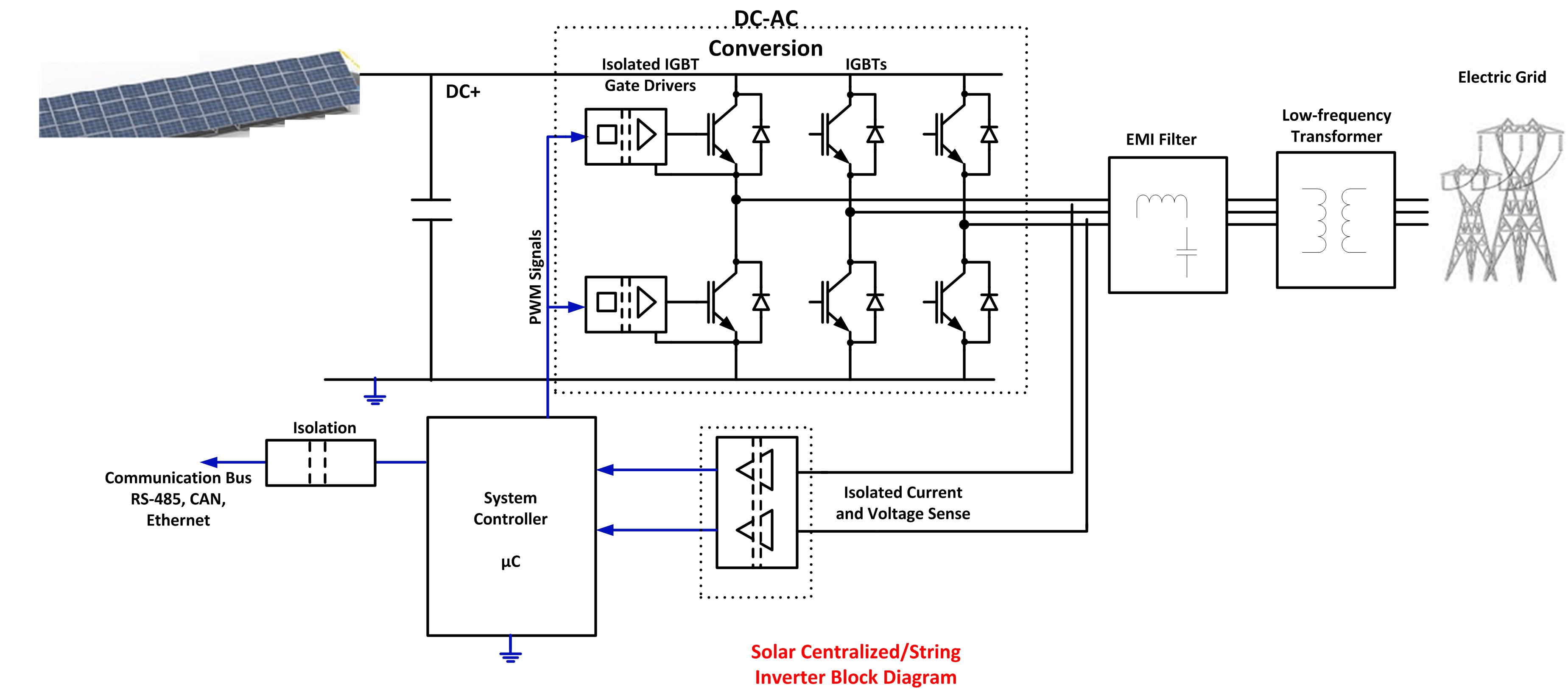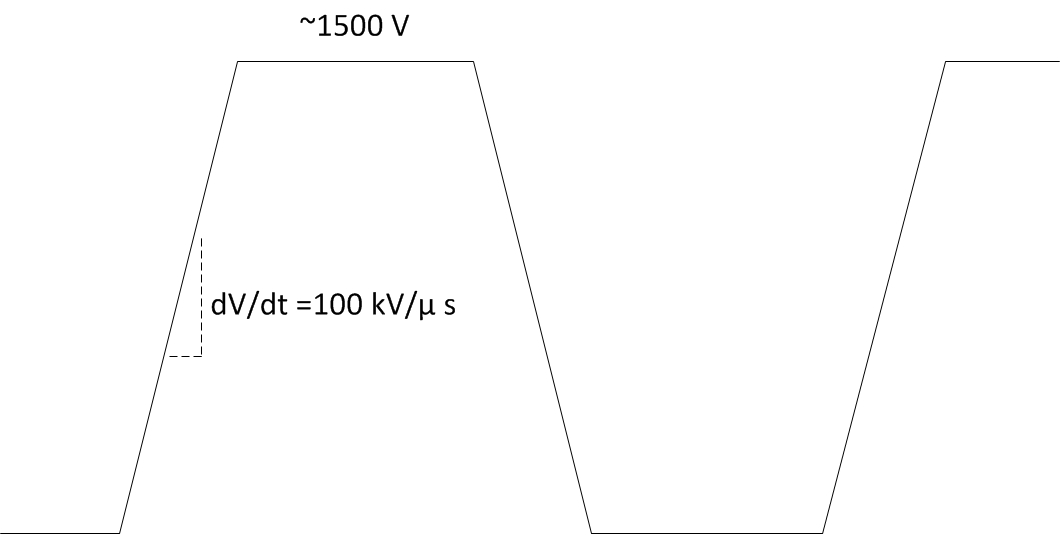SSZTC42 october 2015 ISO5451 , ISO5851
In my previous blog post, I discussed the use of isolators for protection against high voltage. In this post, I discuss a key performance parameter of isolators: Common mode transient immunity, or CMTI.
CMTI describes an isolator’s ability to tolerate high-slew-rate voltage transients between its two grounds without corrupting signals passing through it. In general, higher CMTI indicates robustness to noise, and is an advantage in any isolation application. However, there are some particular applications where high-CMTI isolators can enable significant differentiation for the end product.
Solar, wind energy and grid storage applications use inverters to convert generated or stored DC power to AC power that is then fed into the electric grid. The inverter comprises insulated-gate bipolar transistors (IGBTs) or other power semiconductor devices controlled by a microcontroller. Isolated gate drivers or digital isolators combined with nonisolated gate drivers translate signals from the microcontroller to gate controls to the power devices. This provides the correct voltage and current drive to the power devices, and isolates the microcontroller from the inverter’s high-voltage parts. Figure 1 shows a simplified block diagram of a central solar inverter.
 Figure 1 Simplified Block Diagram of a
Central Solar Inverter
Figure 1 Simplified Block Diagram of a
Central Solar InverterThe isolators used in these applications face high ground transients (see Figure 2), since one of the two grounds is connected to rapidly switching inverter outputs. For high-power inverter designs, the inverter outputs could switch up to 1500V in a few tens of nanoseconds. CMTI is a critical parameter here, since any bit errors caused in the isolators by these ground transients can result in dangerous short circuits.
 Figure 2 Inverter Output Switching
Profile Translates to High CMTI for Isolators
Figure 2 Inverter Output Switching
Profile Translates to High CMTI for IsolatorsInverters in solar, wind energy and stationary storage are starting to use higher DC bus voltages, smaller switching times and higher switching frequencies. Each of these factors increases the CMTI requirement from the isolators.
Use of higher DC bus voltage increases output power while keeping current levels and copper costs the same, hence reducing per-unit cost of energy generated. Efficiency also improves since the total power output increases (higher V), but the conduction losses remain the same (same I). Inverter efficiency improves, given reduced switching transition times. A higher switching frequency results in less costly and less bulky magnetics such as inductors and transformers. The availability of reliable silicon carbide (SiC)-based power transistors, which can switch faster and tolerate higher voltages compared to traditional IGBTs, also contributes to an inverter’s ability to switch faster and more efficiently.
The availability and use of high CMTI isolators can thus bring several benefits to high power solar, wind energy and stationary storage applications.
TI has recently released the ISO5851 and ISO5451 isolated gate drivers, offering a 100kV/µs minimum CMTI. TI also offers the ISO78xx family of digital isolators, with a 70kV/µs minimum CMTI. These isolators enable less costly and more efficient high-power inverter designs.
What else would you like to know about isolation and CMTI? Leave a comment below and stay tuned to the Industrial Strength blog in the coming months to read more about this topic.
Additional Resources
- Read the datasheets for TI’s ISO5851 and ISO5451 isolated gate drivers.
- Download TI’s white paper, “High-voltage reinforced isolation: Definitions and test methodologies.”
- Kick-start your next design with TI’s Digital Isolator Design Guide.
- Read other blog posts about isolation.